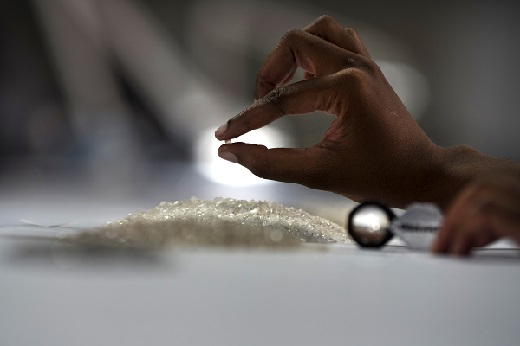
Angola has signalled its intention to buy back the 85% stake in De Beers currently held by Anglo American, in a move that has immediately captured global industry attention. The proposal, made through Angola’s state-owned diamond company Endiama, comes at a time when the diamond sector has struggled to regain momentum after the downturn that began in 2022.
The announcement positions Angola decisively on the world stage. The country produced 10.7 million carats in the first nine months of the year and is targeting a record 14.8 million carats by 2025. According to the Kimberley Process, Angola’s expected 14 million carats in 2024 place it above Botswana in rough-diamond output for the first time in two decades. This surge, driven by the vast Catoca open-pit mine and other major deposits, underscores Angola’s long-term strategy of advancing local beneficiation and resource industrialisation.
Against this backdrop, Endiama has formally expressed interest in acquiring Anglo American’s controlling stake as the parent company restructures and divests assets following its 2024 strategic review. Should the transaction proceed, it would mark one of the most consequential ownership shifts in the diamond industry’s modern history.
Complicating the landscape is Botswana’s position. The country currently holds the remaining 15% stake in De Beers and announced in September its intention to increase its shareholding to more than 50%. Botswana relies heavily on diamonds, which account for roughly one-third of government revenue and 80% of exports, while Angola is seeking to reduce dependence on oil through expansion of its mining sector.
The implications of an Angolan takeover are far-reaching. De Beers remains one of the world’s most influential suppliers of rough diamonds, with 2024 revenues of US$2.7 billion and a valuation near US$4.9 billion. Its sales cycles, production planning, and market guidance shape between one-quarter and one-third of global rough supply, giving the company significant influence over pricing, availability, and the high-end jewellery pipeline.
A shift in control could potentially redirect more value-added processes to Africa, including sorting, cutting, and polishing — areas historically dominated by centres outside the continent. Increased localisation could boost employment, strengthen regional economies, and reshape supply-chain dynamics at a time when Botswana has reduced output and seen fiscal pressure rise, while Angola’s production profile continues to accelerate.
However, questions remain. Angola has stated that the acquisition would not be funded through its national budget, leaving the structure and financing mechanism yet to be clarified. Diplomatic tension with Botswana is another risk factor, particularly if competing bids emerge or national interests collide.
On a global scale, the outcome could introduce both opportunity and volatility. Greater African control over rough supply may support local markets, but the broader diamond industry continues to face challenges, including subdued demand, geopolitical instability, and mounting competition from lab-grown diamonds, which have disrupted consumer expectations and pricing patterns.
If Angola’s bid succeeds, it would mark a historic realignment of influence within the natural-diamond sector — one with the potential to reshape trade flows, pricing dynamics, and the strategic balance of power for years to come.